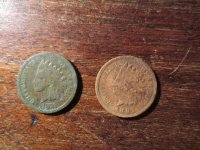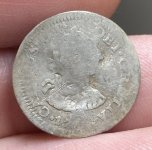SHERMANVILLE ILLINOIS
Gold Member
- May 22, 2005
- 7,205
- 60
- Primary Interest:
- Other
Shipwreck disaster experts are calling for a deep-sea expedition to a lost U.S. nuclear attack sub, the USS Scorpion, in an effort to verify a new theory on what caused the Cold War vessel to sink.
The Scorpion was lost May 22, 1968, killing 99 men, about 400 miles south of the Azores Islands in the middle of the Atlantic Ocean. The sub has been inspected by undersea recovery teams, including a visit in 1985 by oceanographer Robert Ballard before his team's discovery of the Titanic shipwreck. The cause of the sub's loss has remained hotly disputed. A Navy Court of Inquiry found "the cause of the loss cannot be definitively ascertained."
"The families of those 99 men are still out there, and they want to know what happened," says former U.S. naval officer Paul Boyne, who presented a new mechanical explanation for the loss of the sub at a recent marine forensics symposium just outside Washington. Panelists at the event called for a summer expedition to the sub's wreck, led by P.H. Nargeolet, another Titanic explorer, saying it might put to rest a multitude of theories about the Scorpion's demise -- ranging from a covert Soviet attack to a torpedo self-firing into the ship to a faulty trash disposal.
Evidence for a more mundane explanation comes from the sub's propeller shaft, Boyne says. Undersea photographs show it rests about 20 yards outside the wreck on the seafloor, about 11,220 feet underwater. Boyne suggests that rubber bearings holding the propeller shaft failed, putting stress on the coupling connecting it to the engine. The coupling's bolts failed catastrophically during a deep test dive, the theory goes, spilling water into the sub too rapidly to allow ballast maneuvers to raise the ship to the surface
As support, Boyne points to the loss in 1963 of the USS Thresher, the only other nuclear submarine lost by the Navy. The Thresher suffered a similar crushing end but retained its propeller shaft within its hull.
In its planned proposal to the U.S. Navy's Naval History & Heritage Command (NHHC) in Washington, the team would send a robot sub to the wreck to photograph the displaced shaft. The robot would send a small tethered camera into the ship's engine room to examine the damage to the coupling bolts.
Because the sub carried two nuclear-tipped torpedoes and a nuclear reactor, the Navy has periodically tested the water around the submarine for radiological releases, at least as recently as 1998.
Investigators who start from technical documents related to the ship's loss, typically differ with his interpretation, he says, which was based on interviews with Navy personnel.
"It couldn't hurt to have a documented expedition to Scorpion," says Offley, who is not a member of the proposed expedition team.
On May 27, 1968, family members of the USS Scorpion's crew waited on a Norfolk dock for the return of the submarine.
At least 11 of them have joined in the call for the expedition.
Experts out to solve deep-sea mystery of the USS Scorpion - Navy - Stripes
have a good un...
SHERMANVILLE
The Scorpion was lost May 22, 1968, killing 99 men, about 400 miles south of the Azores Islands in the middle of the Atlantic Ocean. The sub has been inspected by undersea recovery teams, including a visit in 1985 by oceanographer Robert Ballard before his team's discovery of the Titanic shipwreck. The cause of the sub's loss has remained hotly disputed. A Navy Court of Inquiry found "the cause of the loss cannot be definitively ascertained."
"The families of those 99 men are still out there, and they want to know what happened," says former U.S. naval officer Paul Boyne, who presented a new mechanical explanation for the loss of the sub at a recent marine forensics symposium just outside Washington. Panelists at the event called for a summer expedition to the sub's wreck, led by P.H. Nargeolet, another Titanic explorer, saying it might put to rest a multitude of theories about the Scorpion's demise -- ranging from a covert Soviet attack to a torpedo self-firing into the ship to a faulty trash disposal.
Evidence for a more mundane explanation comes from the sub's propeller shaft, Boyne says. Undersea photographs show it rests about 20 yards outside the wreck on the seafloor, about 11,220 feet underwater. Boyne suggests that rubber bearings holding the propeller shaft failed, putting stress on the coupling connecting it to the engine. The coupling's bolts failed catastrophically during a deep test dive, the theory goes, spilling water into the sub too rapidly to allow ballast maneuvers to raise the ship to the surface
As support, Boyne points to the loss in 1963 of the USS Thresher, the only other nuclear submarine lost by the Navy. The Thresher suffered a similar crushing end but retained its propeller shaft within its hull.
In its planned proposal to the U.S. Navy's Naval History & Heritage Command (NHHC) in Washington, the team would send a robot sub to the wreck to photograph the displaced shaft. The robot would send a small tethered camera into the ship's engine room to examine the damage to the coupling bolts.
Because the sub carried two nuclear-tipped torpedoes and a nuclear reactor, the Navy has periodically tested the water around the submarine for radiological releases, at least as recently as 1998.
Investigators who start from technical documents related to the ship's loss, typically differ with his interpretation, he says, which was based on interviews with Navy personnel.
"It couldn't hurt to have a documented expedition to Scorpion," says Offley, who is not a member of the proposed expedition team.
On May 27, 1968, family members of the USS Scorpion's crew waited on a Norfolk dock for the return of the submarine.
At least 11 of them have joined in the call for the expedition.
Experts out to solve deep-sea mystery of the USS Scorpion - Navy - Stripes
have a good un...
SHERMANVILLE






